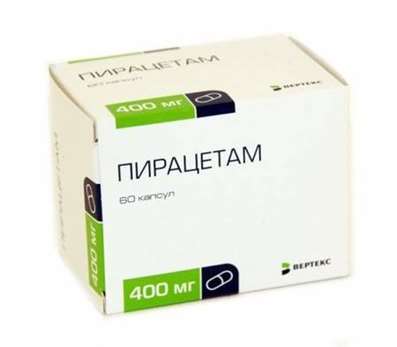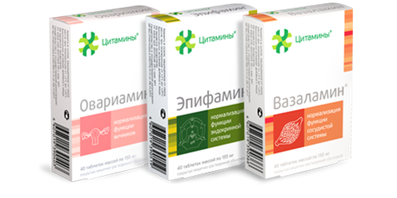Instruction for use: Vulnusan
I want this, give me price
ATX code D11AX Preparations for the treatment of skin diseases others
Pharmacological group
dermotropic means
Nosological classification (ICD-10)
I73.1 Obliterating thromboangiitis [Buerger's disease]
Berger's disease, Thromboangiitis obliterans, Thromboangiitis, Obliterating thromboangiitis
I83.0 Varicose veins of the lower extremities with ulcer
Varicose Ulcer of the Lower Leg, Trophic ulcers of lower extremities, Varicose ulcer
K62 Other diseases of anus and rectum
L02 Skin abscess, furuncle and carbuncle
Furuncle of external auditory canal, Furuncle of the auricle, Furuncles, Abscess, Abscess of skin, Carbuncle, Carbuncle skin, Furuncle, Skin furuncle, Furunculosis, Chronic recurrent furunculosis
L98.4 Chronic skin ulcer, not elsewhere classified
Secondary-infected trophic ulcers, Long-lasting non-healing skin ulcer, Ulceration of the skin, Cutaneous ulcer, Wet sore ulcers, Chronic ulcers, Chronic skin ulcers, Chronic skin ulcer, Ulcers coughing, Septic ulcer
L98.4.1 * Purulent skin ulcer
Purulent ulcer, Infected varicose ulcer, Infected trophic ulcer
L98.4.2 * Trophic skin ulcer
Varicose ulcer, Varicose ulcers, Cutaneous ulcer, Non-healing ulcers, Trophic ulcer, Trophic ulcer of lower leg, Trophic skin lesions, Trophic after-burn ulcers, Trophic ulcers, Trophic skin ulcers, Ulcer of lower leg, Ulcer of skin, Ulcer of trophic skin, Ulcer on legs, Ulcerative necrosis of the skin, Ulcer of shin, Ulcer of the lower leg, Ulcers of lower extremities, Difficult healing ulcers
L98.9 Lesion of skin and subcutaneous tissue, unspecified
Adiponecrosis, Atonic leather, Diseases of the skin, Blister, Inflammatory disease of soft tissues, Inflammatory processes of epithelial tissues, Degenerative changes in the skin and mucous membranes, Degenerative changes in the skin and mucous membranes, Excess granulation, Thinning of the skin, Skin diseases, Maceration of the skin, Minor skin lesions, Surface crack and skin abrasion, Increased skin peeling, Skin lesion, Erosion of the skin, Lipedema, Local non-infectious processes of skin and soft tissues, Disturbance of skin structure, Dysfunction of the skin, Skin disorders
N86 Erosion and ectropion of cervix uteri
Cervical Ectopy, Ectropion of cervix uteri, Vaginal erosion, Cervical erosion, Ulcers on the cervix, Cervical ectopia
O92.1 Nipple associated with childbirth
Cracks in the nipple area, Cracks in the nipples of breastfeeding mothers, Cracked nipple, Inflammation of the nipple of breast in nursing mothers
T14.1 Open wound of unspecified body region
Secondary healing processes, Sluggishly granulating wounds, Sluggishly healing wounds, Sluggish wounds, Deep Wounds, Purulent wound, Granulating wounds, Prolonged non-healing wound, Long-lasting non-healing wound and ulcer, Long-lasting non-healing soft tissue wound, Healing of wounds, Wound healing, Capillary bleeding from superficial wounds, Bleeding wound, Radiation Wounds, Slowly epithelializing wounds, Minor cuts, Suppurated wounds, Violation of wound healing processes, Breach of skin integrity, Violations of the integrity of the skin, Violations of the integrity of the skin, Small cuts, Uninfected wounds, Uncomplicated wounds, Operating wound, Primary treatment of surface contaminated wounds, Primary wound treatment,Primary-delayed treatment of wounds, Poorly cicatrizing wound, Poor wound healing, Bad wound, Superficial injury, Superficial wound with mild exudation,Wound, The wound is large, Bite wound, Wound process, Wounds, Wound healing wounds, Stump Wounds,Wounds for gunshot, Wounds with deep cavities,Difficult healing wounds, Difficult wounds, Chronic Wounds
T79.3 Post-traumatic wound infection, not elsewhere classified
Inflammation after surgery and trauma, Inflammation after trauma, Secondary infection of skin and mucous membrane damage, Deep Wounds, Purulent wound, Purulent necrotic phase of wound process, Purulent-septic diseases, Purulent wounds, Purulent wounds with the presence of deep cavities, Granulating wounds of small size, Disinfection of purulent wounds, Wound Infections, Infections wound, Infection of wounds, Infected and non-healing wound, Infected postoperative wound, Infected wound, Infected Skin Wounds, Infected burns, Infected Wounds, Suppurating postoperative wounds, Extensive purulent-necrotic process of soft tissues, Burn infections, Burn infection, Perioperative infection, Poorly healing infected wound, Postoperative and purulent-septic wound, Postoperative wound infection, Wound infection, Wound botulism, Wound infections, Wounds of purulent, Wounds infected, Reinfection of granulating wounds, Sepsis posttraumatic
T81.4 Infection associated with the procedure, not elsewhere classified
Postoperative infections, Infection of a postoperative wound, Postoperative infection
Z98.8 Other specified poslehirurgicheskie state
Suppurative complications in the postoperative period, Suppurative complications of surgery, Postoperative liver dysfunction, Postoperative vomiting, Postoperative complications, The postoperative period, The early postoperative period
Composition
Ointment for topical and topical application 100 g
active substance:
mother liquor of Pomorie Lake 12 g
auxiliary substances: castor oil - 20 g; carmellose sodium - 3 g; lanolin - 32 g; sodium benzoate - 0.5 g; distilled water 32.5 g
pharmachologic effect
Pharmacological action - anti-inflammatory.
Dosing and Administration
Locally, externally.
Ointment layer 2-3 mm thick is applied directly to the wound or to a sterile bandage in an amount sufficient to cover the wound surface.
When treating deep abscesses - up to 10-15 g. At the beginning of the treatment, the ointment is applied daily, when the inflammatory process stops and the granulation tissue appears - every other day. When treating cracked nipples of the breast - several times a day after feeding the baby. Before the beginning of the next feeding, the preparation is thoroughly washed off with warm boiled water. In the treatment of cervical erosion, a tampon with a drug applied to it is used, which is administered once a day, preferably in the evening, for 10-15 days.
Form of issue
Ointment for external and local use. In aluminum tubes of 45 g; in a pack of cardboard 1 tuba.
Conditions of leave from pharmacies
Without recipe.
storage Conditions
In a dry, the dark place at a temperature of no higher than 25 ° C.
Keep out of the reach of children.
shelf life
2 years. After opening the bottle - 1 month.
Do not use after the expiry date printed on the package.

 Cart
Cart





